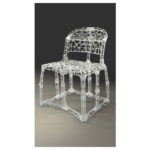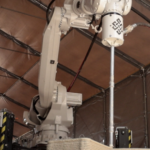Oxidation in metals typically weakens mechanical systems by forming rust or causing other issues. Additively manufactured metals, used extensively in aerospace, marine, and automotive industries, are especially vulnerable due to increased porosity from the 3D printing process.
Professor Changhong Ke from Binghamton University has proposed using oxidation to strengthen metals. With a $150,000 National Science Foundation EAGER grant, Ke is exploring the integration of boron nitride nanotubes into 3D printed aluminum. Boron nitride, used in various applications from cosmetics to dental cement, could make the aluminum self-strengthening in corrosive environments.

“You can’t avoid oxidation, so we are trying to take advantage of it by turning it into a new, reinforcing mechanism to make the material stronger,” said Ke.
“That would be something really amazing. People could try to design the materials to include these sorts of porosities or even purposely introducing structures that can be more easily oxidized because it becomes something beneficial instead of harmful to the material itself.”
Ke’s concept involves embedding boron nitride nanotubes, a few nanometers thick and up to hundreds of microns long, within the metal. The goal is for the nanotubes to enhance the metal’s strength as it oxidizes. His team will use a force sensor and high-resolution scanning electron microscope to observe the nanotubes’ behavior during oxidation.
Additionally, macro-scale testing will assess how oxidation affects the material’s stiffness, strength, and toughness. Collaborators at the University of Illinois will verify experimental results with computational modeling. Ke aims to shift the perspective on metal oxidation, especially for 3D printed metals, potentially impacting future material design and manufacturing.
This approach could enhance U.S. manufacturing competitiveness through advanced materials with improved performance in corrosive environments.
Source: binghamton.edu









